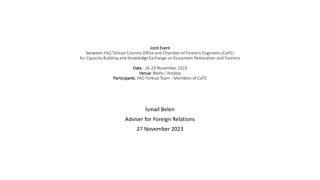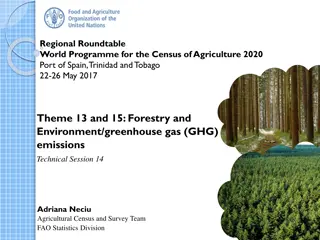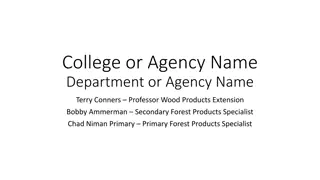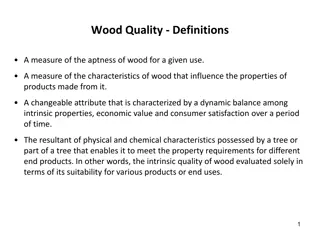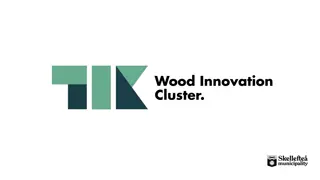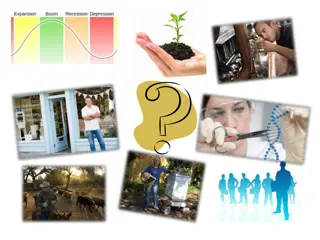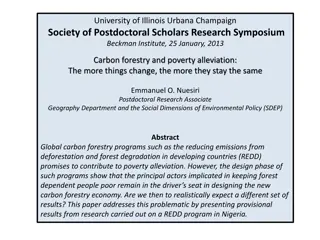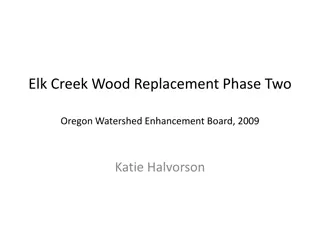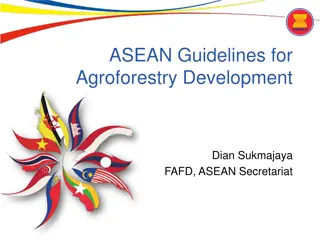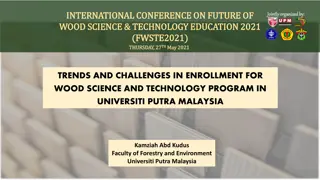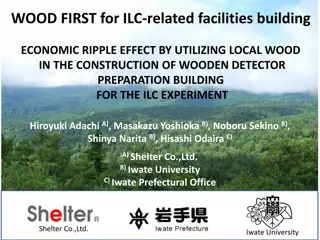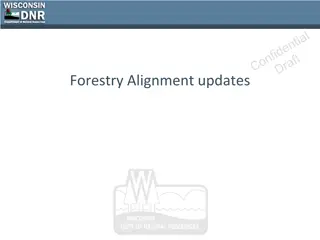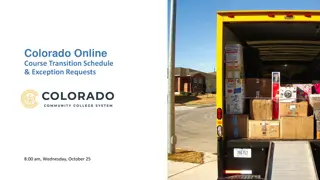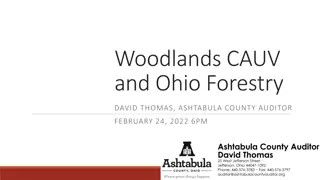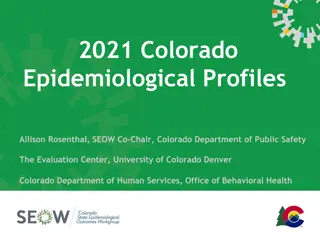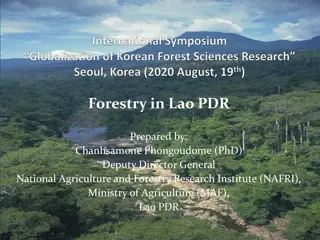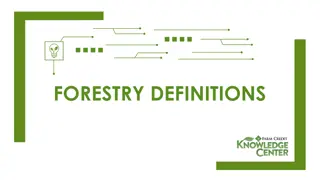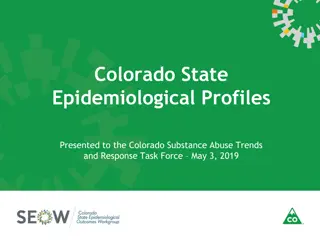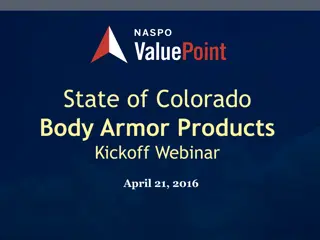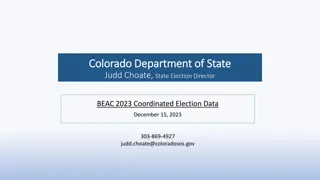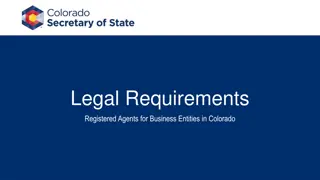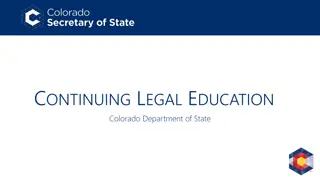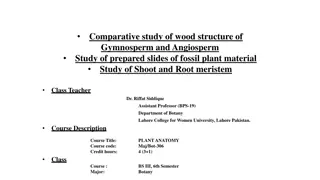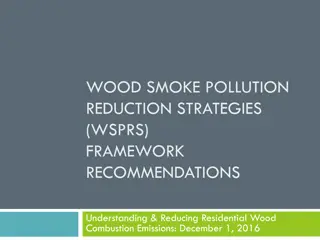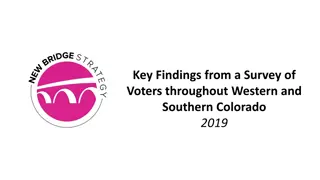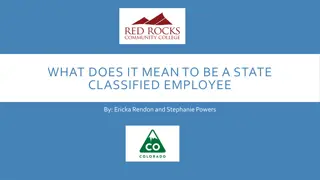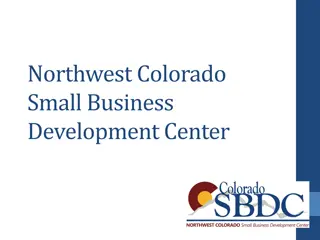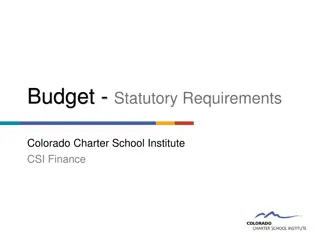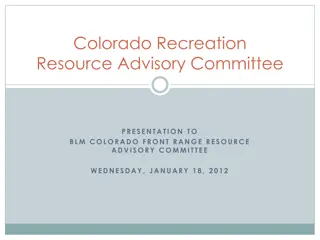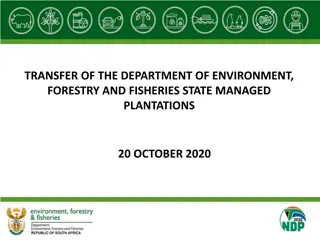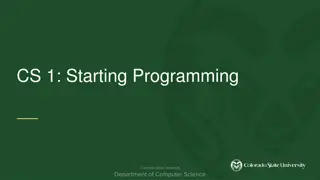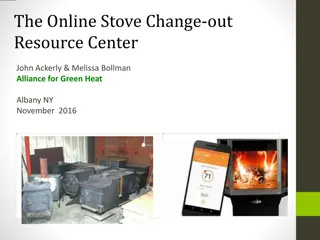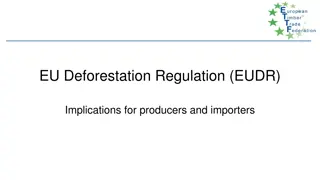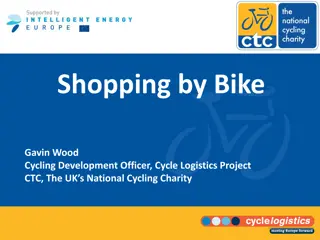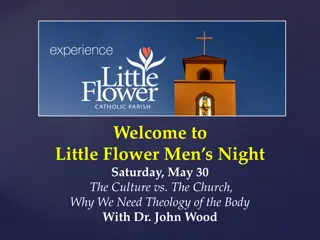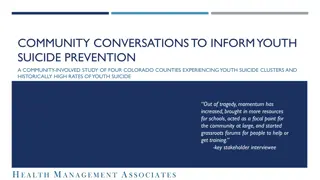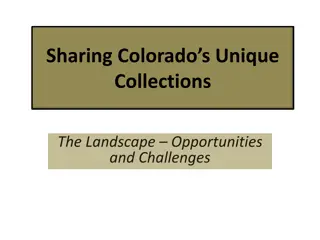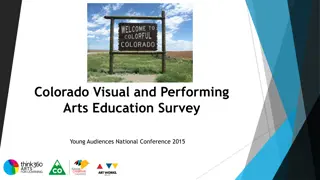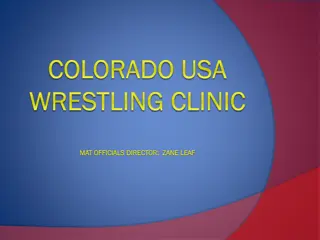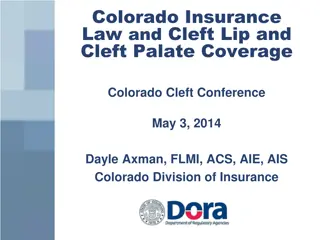Forestry and Wood Products Program Overview at Colorado State University
The program at Colorado State University focuses on wood utilization, business marketing, urban tree utilization, and more. Funding primarily comes from soft sources like grants and tax receipts. Changes in clientele interests have shifted towards urban wood utilization post-Great Recession. The program lacks mill-level technical expertise, receives common requests on industry statistics and timber valuation, and excels in lending programs and biomass-energy education.
Uploaded on Oct 08, 2024 | 0 Views
Download Presentation

Please find below an Image/Link to download the presentation.
The content on the website is provided AS IS for your information and personal use only. It may not be sold, licensed, or shared on other websites without obtaining consent from the author. Download presentation by click this link. If you encounter any issues during the download, it is possible that the publisher has removed the file from their server.
E N D
Presentation Transcript
Colorado State University, Warner College of Natural Resources, Colorado State Forest Service Tim Reader Tim Reader Program Specialist Utilization & Marketing Colorado State Forest Service Durango, Colorado tim.reader@colostate.edu (970)247.5250 Ph. (970)759.2443 Cell
Describe your overall Forestry & Wood Products Describe your overall Forestry & Wood Products Extension or Outreach/Education program Extension or Outreach/Education program Number of faculty 1.5 FTE County-based 1.0 FTE (Statewide) Campus-based 0.5 FTE (Teaching Focus) Areas of focus (e.g., wood utilization, biomass, small woodland owner assistance, etc.) Wood-Energy, Business Marketing Membership Organization, Business Loan Fund, Urban Tree Utilization Funding sources (hard vs. soft money positions) 100% soft; statewide severance tax (oil and gas) tax receipts, grants and cooperative agreements with USFS
What changes have been made in program in What changes have been made in program in the past 5 years? the past 5 years? Changes planned for next 5 loss of 0.5 FTE (retirement), loss of research capacity New hires? Unlikely Retirements? (plans to replace) (see above) How has your clientele base changes since the Great Recession More inquiries/interest in urban wood utilization (EAB driven), more program administration, less one-on-one sawmill technical assistance, increasing assistance for business planning
What expertise are you missing that is most What expertise are you missing that is most often asked for? often asked for? How do you fulfill those requests now? Lack of mill level technical assistance/consulting expertise in specific areas, lack of current industry/mill level information (survey)
Top 3 to 5 most common requests (FAQs) 1. Industry statistics (size, types, location, employment etc.) 2. Timber valuation and utilization options for small landowners 3. workforce recruitment and training And are you receiving requests for assistance with advanced manufacturing (scanning, optimization, robotics, automation, etc.) on the list? No. How about Industry 4.0, Internet of Things, Big Data? No.
What are your strengths? What are your strengths? Examples of exemplary programs the flagship stuff Lending program, harvesting cost analysis, biomass-energy education and outreach
Describe the 3 biggest challenges facing your Describe the 3 biggest challenges facing your program program Recent staffing reductions (full time and students) Lack of private sector biomass utilization expertise and technology providers Communicating the need
Describe the 3 biggest opportunities for your Describe the 3 biggest opportunities for your program program Affect/Influence Region 2 Biomass Program Design and Delivery (R2 Vacancy) Increased Networking and Cooperation with other State U & M Staff Engage directly and provide U & M support to high visibility (and well funded) statewide Good Neighbor and CFLRP projects


